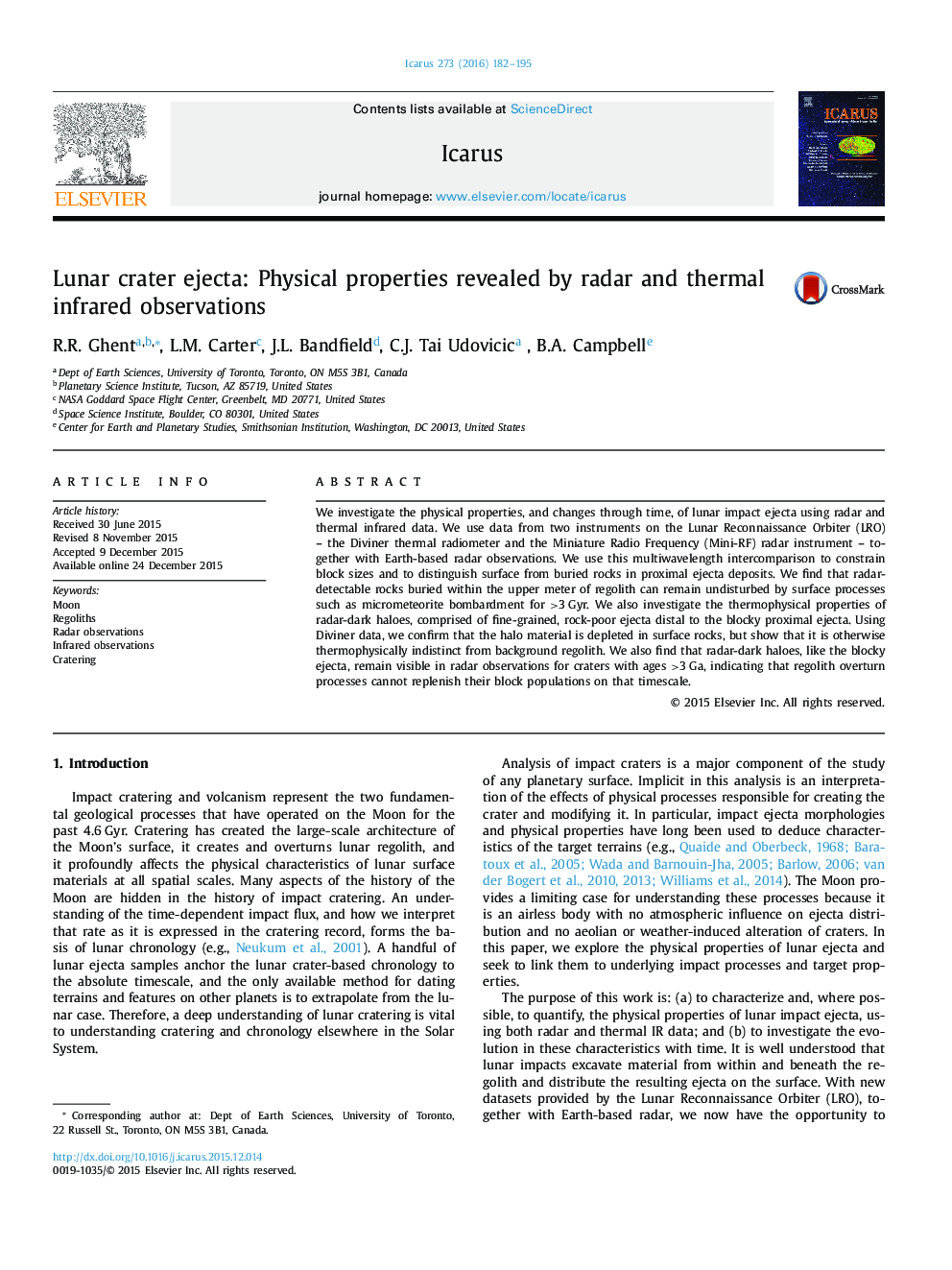| Article ID | Journal | Published Year | Pages | File Type |
|---|---|---|---|---|
| 8135138 | Icarus | 2016 | 14 Pages |
Abstract
We investigate the physical properties, and changes through time, of lunar impact ejecta using radar and thermal infrared data. We use data from two instruments on the Lunar Reconnaissance Orbiter (LRO) - the Diviner thermal radiometer and the Miniature Radio Frequency (Mini-RF) radar instrument - together with Earth-based radar observations. We use this multiwavelength intercomparison to constrain block sizes and to distinguish surface from buried rocks in proximal ejecta deposits. We find that radar-detectable rocks buried within the upper meter of regolith can remain undisturbed by surface processes such as micrometeorite bombardment for >3Â Gyr. We also investigate the thermophysical properties of radar-dark haloes, comprised of fine-grained, rock-poor ejecta distal to the blocky proximal ejecta. Using Diviner data, we confirm that the halo material is depleted in surface rocks, but show that it is otherwise thermophysically indistinct from background regolith. We also find that radar-dark haloes, like the blocky ejecta, remain visible in radar observations for craters with ages >3Â Ga, indicating that regolith overturn processes cannot replenish their block populations on that timescale.
Related Topics
Physical Sciences and Engineering
Earth and Planetary Sciences
Space and Planetary Science
Authors
R.R. Ghent, L.M. Carter, J.L. Bandfield, C.J. Tai Udovicic, B.A. Campbell,
